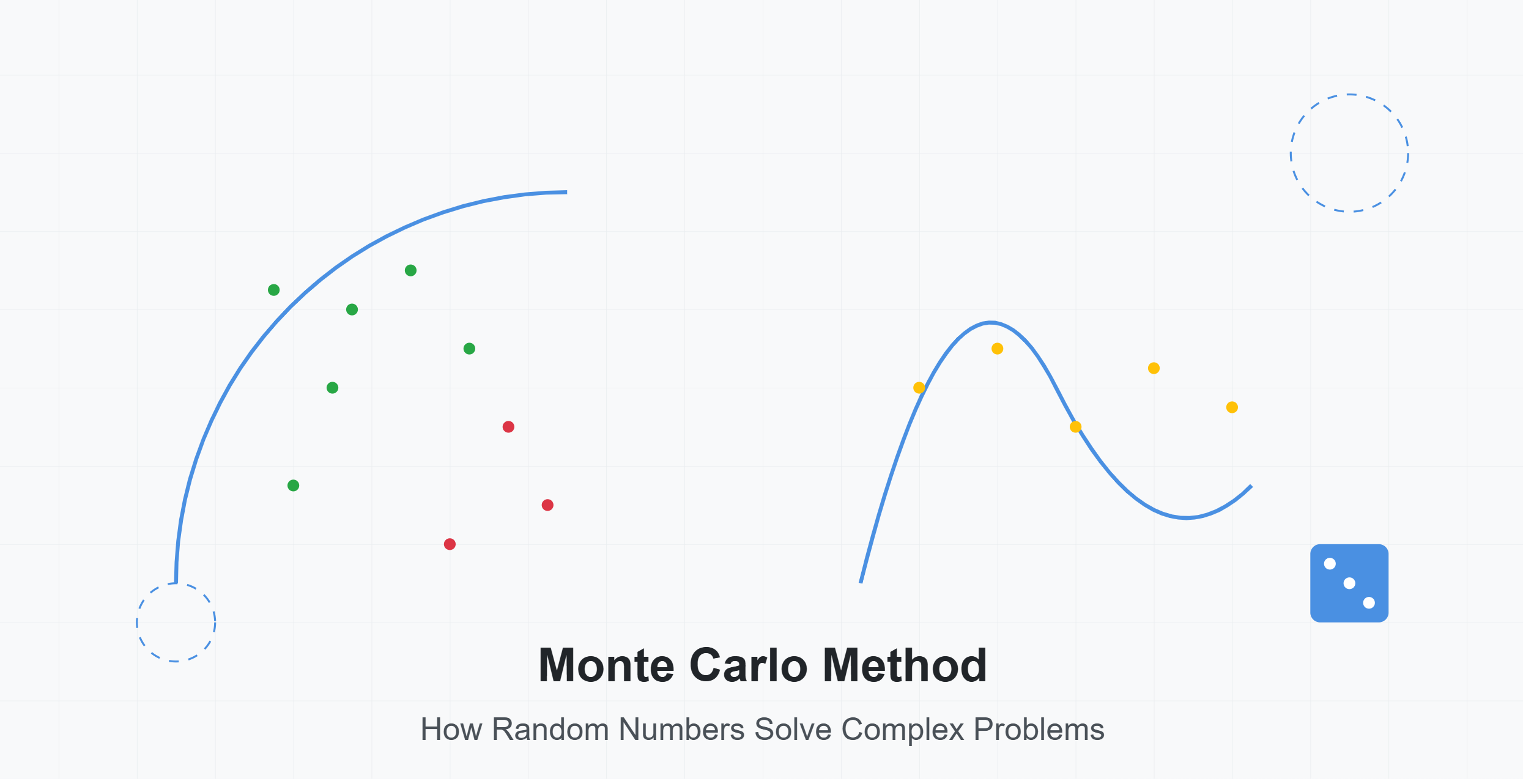Monte Carlo Methods: Using Random Sampling to Solve Complex Numerical Problems in Inference
Introduction: When Uncertainty Becomes the Artist’s Brush
Imagine standing before a vast canvas with no clear lines—just probabilities swirling like mist. Instead of a paintbrush, you hold randomness itself. Every stroke, every drop of chance, slowly reveals a pattern—a masterpiece shaped not by certainty, but by repetition and probability.
That’s what Monte Carlo methods do. They transform randomness into precision, turning uncertainty into a reliable ally for solving the most complex problems in inference. From estimating the value of π to predicting financial risks and Bayesian posterior distributions, Monte Carlo simulations have become the invisible artisans behind modern computational science.
To truly appreciate their elegance, let’s step into the story of how randomness became one of the most deterministic tools of the digital age.
1. The Casino That Birthed Certainty
The story of Monte Carlo begins not in a lab, but in the world of chance—the glamorous Monte Carlo Casino in Monaco. During World War II, mathematician Stanislaw Ulam found himself recovering from illness and passing time playing solitaire. As he tried to estimate his odds of winning, an idea struck him—why not use random sampling to approximate outcomes that are too complex to calculate directly?
Together with John von Neumann, Ulam built a framework where randomness wasn’t the enemy of accuracy but its secret accomplice. They used random numbers to simulate thousands of possible outcomes, averaging them to approach an accurate solution.
Today, this principle forms the backbone of computational inference, helping scientists, engineers, and statisticians make sense of problems too complex for traditional mathematics. Learners who pursue a data scientist course often encounter Monte Carlo simulations as a cornerstone technique in probabilistic modeling and machine learning.
2. Randomness as an Architect: How Monte Carlo Works
Imagine trying to measure the area of a shape so complex that no formula exists for it—like a cloud or a mountain range. Monte Carlo methods approach this challenge by throwing “digital darts.” Thousands of random points are scattered over the space, and by observing where they land, we estimate the desired value—be it an integral, a probability, or a physical quantity.
The process follows a simple cycle:
- Generate random samples from a probability distribution.
- Evaluate a function at each sample point.
- Aggregate the results to estimate the desired value.
The magic lies in the law of large numbers: as the number of samples increases, the estimate converges to the true value.
It’s a dance between chaos and convergence—a reminder that even randomness, when guided by repetition, reveals profound order. For those pursuing a data science course in Mumbai, Monte Carlo techniques serve as essential tools for simulations, predictive analytics, and uncertainty quantification.
3. The Power of Approximation in Bayesian Inference
In statistical inference, especially Bayesian reasoning, we often deal with probabilities of probabilities. The posterior distributions that emerge after observing data are rarely simple or easy to compute.
Enter Monte Carlo methods. Techniques like Markov Chain Monte Carlo (MCMC) generate dependent random samples that gradually approximate the posterior distribution. Each sample is like a puzzle piece, and after enough pieces are collected, the picture becomes clear.
This is how complex models—like those used in genetics, economics, and artificial intelligence—are made practical. Monte Carlo methods bridge the gap between theory and application, transforming the seemingly impossible into something computable.
Professionals mastering these skills through a data scientist course gain a deep understanding of probabilistic modeling, which helps them design more accurate and interpretable AI systems.
4. Monte Carlo in Action: From Finance to Climate Models
Monte Carlo simulations have traveled far from their mathematical roots. They now steer risk analysis in finance, forecast climate patterns, simulate nuclear reactions, and even optimize video game physics.
In finance, they help investors estimate the future value of portfolios by simulating thousands of market scenarios. In climate science, they model atmospheric changes where exact equations are impossible. Even in healthcare, Monte Carlo simulations aid in predicting the spread of diseases and optimizing treatment plans.
It’s the same story everywhere—when reality is too complex to model directly, randomness provides clarity. Students enrolled in a data science course in Mumbai learn to harness Monte Carlo techniques for such real-world applications, where data-driven simulation meets decision-making.
5. The Beauty of Random Precision
Monte Carlo methods are paradoxical—they rely on randomness to create certainty, on noise to produce clarity. They remind us that sometimes, the straight path to truth is not a line, but a swarm of possibilities averaging toward precision.
Like artists blending chaos into form, data scientists wield Monte Carlo simulations to estimate, predict, and infer truths that mathematics alone cannot reach. The brilliance of this approach lies not in eliminating uncertainty, but in embracing it.
As technology advances, and computational inference becomes ever more central to artificial intelligence and scientific discovery, Monte Carlo methods continue to prove that randomness—once feared—can be the purest expression of order.
Conclusion: From Chance to Certainty
In a world dominated by data, Monte Carlo methods serve as a bridge between intuition and mathematics—a technique that finds truth in the heart of randomness. They embody the spirit of exploration that defines every data scientist: to find patterns where others see chaos.
Whether you’re a researcher building predictive models or a learner in a data scientist course, mastering Monte Carlo methods means understanding that precision often emerges not from control, but from letting randomness show its elegant order.
And so, the dice roll—not in a casino, but in the circuits of computation—revealing that chance, when properly understood, is one of the universe’s most reliable tools.
Business name: ExcelR- Data Science, Data Analytics, Business Analytics Course Training Mumbai
Address: 304, 3rd Floor, Pratibha Building. Three Petrol pump, Lal Bahadur Shastri Rd, opposite Manas Tower, Pakhdi, Thane West, Thane, Maharashtra 400602
Phone: 09108238354
Email: enquiry@excelr.com





